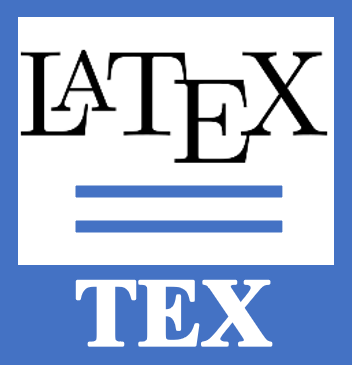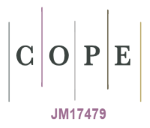Author Guidelines
All manuscripts should be submitted, and subsequently reviewed, online through the journal’s website submission system. Before submitting a manuscript, new submitting author(s) must register to create an account. Author(s) are required to use the journal's provided template (MS Word or LaTeX format) to prepare their manuscript.
The submitting author takes responsibility for the manuscript during submission and peer-reviewing. The submitted manuscripts must not have been published elsewhere and are only being considered by this journal.
For researchers wishing to publish in the Al-Mustansiriyah Journal of Science, please consider the following points:
- The Manuscript should be written in English only.
- An Abstract should be provided (200 to 350 words).
- Author(s) should use the journal's provided template (MS Word or LaTeX format) to prepare their manuscript.
- Emails and ORCID should be provided for all authors.
- Five keywords need to be added after the abstract.
- The manuscript’s main titles (abstract, introduction, materials and methods, results and discussion, conclusion, references).
- Manuscript font: Times New Roman, 12 pt.
- Tables and figures are placed in the results in the sequence mentioned, not at the end of the manuscript.
- Line and paragraph spacing should be: 1.5
- The manuscript has been spell-checked and grammar-checked.
- All references mentioned in the Reference List are cited in the text, and vice versa.
- Editorial policies have been reviewed.
Structure of Manuscript
- Title
- Centered bold, 14 pt Times and Roman.
- The first letter of each word should be capitalized, except for prepositions.
- No abbreviations (unless needed), no period after the title.
- List of Authors
- First name (full or initial), middle initial, full last name
- Capitalize only the first letter of each full name
- No title, position, or degree of authors
- Centered bold, 12 pt Times New Roman
- Affiliation
use the form to refer to each address provided (Department, College, University, City, Country, Email, ORCID).
- CORRESPONDANCE
Name, and email address.
- ABSTRACT
- 200 to 350 words limit.
- Structure: Background, Objective, Methods, Results, and Conclusions.
- Avoid abbreviations (only if needed).
- KEYWORDS
Five words or short phrases.
- INTRODUCTION
- Background with key references cited.
- The gap or the research question.
- Aim of the study the last sentence.
- MATERIALS AND METHODS
- Instruments and Equipment: Describe the instruments and equipment used.
- Reagents and Chemicals: Specify the sources, chemical compositions, and physical properties if relevant.
- Biological Samples: Describe the samples used.
- Methodology: Provide a detailed explanation of the experimental design.
- Sampling: Describe the sampling method, sample size, and inclusion/exclusion criteria.
- Experimental Steps: Provide a detailed account of each step taken in the experiment.
- Experimental Conditions: Specify the environmental conditions (e.g., temperature, humidity) if they impact the results.
- Statistical Methods: Describe the statistical techniques used to analyze the data.
- Criteria Used: Specify the criteria applied to evaluate the results.
- Limitations: Discuss any limitations in the methodology that might affect the results or their generalizability.
- RESULTS AND DISCUSSION
- All Tables are mentioned, numbered with an Arabic numeral, and cited in numeric sequence in the text (as Table 1. Not Tab. 1:)
- Tables are accompanied by an explanatory caption (above the table) and footnotes
- All Figures are mentioned, numbered with an Arabic numeral, and cited in numeric sequence in the text (as Figure 1. Not Fig. 1:)
- Figures are accompanied by an explanatory caption (under the Figure)
- For Tables and Figures, Only the first letter from the first word is capitalized, not followed by a period.
- Summary of Key Findings: Highlight the results that most significantly contribute to understanding the topic and compare them with the initial hypotheses.
- Interpretation of Results: Interpret the results in the context of previous studies, and discuss any factors that may have influenced the results.
- Contribution to Knowledge: Discuss how the findings contribute to the broader knowledge in the research field, and consider the potential applications of the results.
- Comparison with Previous Studies: Discuss the results compare or contrast with previous studies.
- Limitations and Challenges: Identify any limitations in the study and how they might affect the results.
- CONCLUSION
- Core Results: Provide a brief summary of the main findings obtained during the research.
- Achievement of Objectives: Explain how the research met the objectives set out at the beginning.
- Contribution to Knowledge: State the study contributes to enhancing understanding or expanding knowledge in the research field.
- Final Conclusions: Present the primary conclusions that can be drawn from the research.
- Future Research: Suggest directions or topics for future research based on the findings and limitations.
- Reminder of Limitations: Reiterate any limitations mentioned earlier and how they might affect the generalizability of the results.
-
SUPPLEMENTARY MATERIAL
This section is dedicated to providing additional information that is not included in the main text but may be useful or necessary for a deeper understanding of the study. The elements that can be included in the "Supplementary Material" section are:
- Complete Data Sets: Provide large data sets or detailed tables that may be too lengthy or complex to include in the main text.
- Detailed Graphs: Provide detailed graphs or illustrations that explain technical or methodological aspects not fully covered in the main text.
- Detailed Procedures: Provide additional experimental steps or a more detailed explanation of the methods used.
- Used Code or Software Tools: Share the code or scripts used for data analysis.
- Video or Audio Files: Provide links to video or audio files that demonstrate parts of the experiment or methods used.
- Mathematical or Statistical Analyses: Provide additional details on mathematical or statistical analyses that were performed but not fully included in the main text.
-
AUTHOR CONTRIBUTIONS
The author contributions are used to provide transparency regarding individual contributions to papers. Authors must provide an author contribution, specifying their individual contributions using the following 14 possible roles:
Conceptualization; Data curation; Formal analysis; Funding acquisition; Investigation; Methodology; Project administration; Resources; Software; Supervision; Validation; Visualization; Writing – original draft; Writing – review & editing.
The corresponding author is responsible for ensuring the accuracy of the author contributions and obtaining agreement from all authors. For each author, provide their name followed by their specific contributions. Use commas to separate roles. For example:
Sample author contributions
Jan Doe: Conceptualization, Methodology, Investigation, and Writing - original draft. Zhang San: Formal analysis, Visualization, and Writing - review & editing. Ajay Kumar: Investigation, Software, Funding acquisition and Supervision.
Manuscripts may not involve all author contributions roles, and authors can contribute through multiple roles.
Authors are encouraged to refer to the CRediT website for detailed descriptions of each role.
-
FUNDING
This section is dedicated to disclosing the financial support that made the research possible.
- Acknowledge Funders: Mention all organizations, institutions, or governmental bodies that provided funding for the research. Include the name of the funder and any relevant grant or contract numbers.
- Disclosure of No Funding: If the research did not receive any external funding, this should be clearly stated. You can use a phrase like: "None" or "This research did not receive any specific grant from funding agencies".
-
DATA AVAILABILITY STATEMENT
This section specifies how readers can access the data used in the study.
- Data Repository: Indicate where the data collected and analyzed for the study can be found.
- Links to Data: If the data is available online, provide direct links to the data or repositories.
- Unavailable Data: If the data is not available, explain the reason for its unavailability
- Reason for Unavailability: If the data is not available, explain the reason for its unavailability. This could include legal, privacy, or logistical issues.
An example of how to write a "Data Availability Statement" might be:
"The data that support the findings of this study are available from [Repository Name] under [link or DOI]. Access to these data may be restricted due to [reasons such as privacy concerns or legal restrictions]. Requests for access to the data should be directed to [Contact Person or Organization]."
-
ACKNOWLEDGMENTS
This section is used to express gratitude to individuals or organizations that provided support or assistance with the research.
- Funding Sources: Thank the institutions or organizations that provided financial support for the research.
- Technical Assistance: Thank those who provided technical support or help with data collection and analysis.
- Institutional Support: Thank institutions that assisted with the research, such as universities or research centers.
An example of how to write an "Acknowledgments" section might be:
"We would like to thank [Name] for their invaluable assistance with [specific contribution, e.g., data analysis, technical support]. We also appreciate the support of [Institution or Laboratory Name] for providing the necessary facilities and resources."
-
CONFLICTS OF INTEREST
This section is used to disclose any financial, personal, or other interests that could potentially influence the research's integrity or objectivity.
- Financial Relationships: Disclose any financial relationships that may impact the research, such as funding from commercial companies or organizations with a stake in the research outcomes.
- Employment or Personal Links: Mention any employment, consulting, or personal relationships that could affect objectivity in the research.
- No Conflicts: If there are no conflicts of interest, clearly state this with a phrase like: "The authors declare no conflicts of interest."
An example of how to write a "Conflicts of Interest" statement might be:
"The authors declare that they have no conflicts of interest related to this study. [If applicable] The following potential conflicts of interest were disclosed: [Name] received funding from [Funding Agency], which may have influenced the interpretation of the data."
-
Ethical Approval (optional)
This section is used to disclose the ethical approvals obtained from relevant committees or bodies to ensure that the study was conducted in accordance with ethical standards.
- Responsible Body: Identify the name of the ethics committee or board that granted the ethical approval, such as the institutional review board (IRB) or ethics committee.
- Approval Number: Include the approval number or reference if available, as it helps in verifying the approval.
- Participant Consent: If the study involves human subjects, confirm that informed consent was obtained from all participants.
An example of how to write the "Ethical Approval" section might be:
"The study was approved by the [Name of Ethics Committee] under approval number [Approval Number]."
-
REFERENCES
Al-Mustansiriyah Journal of Science requires a minimum of 25 references to be included in submitted journal papers. The majority of these references should come from the past five years, with the exact number depending on the paper's length. Authors may be requested to include more up-to-date references during the review process if their current references fall short of this requirement.
All-text citations should be presented in consecutive square brackets (i.e., [ ]), referencing the literature in the order of their initial mention within the manuscript. Please make use of tools like EndNote, Mendeley, or similar references management tools. It's important to note that citations from textbooks should be sparingly employed, and references to web pages should be avoided altogether. When citing references, it is imperative to include their Digital Object Identifiers (DOIs). This requirement applies unless the references in question do not possess DOIs. To obtain the DOI for reference, you can utilize the Crossref services from here.
The journal accepts the IEEE (Institute of Electrical and Electronics Engineers) reference style. Here's how you would format references in IEEE style:
Journal Article:
Syntax: Author(s). "Title of the article." Title of the Journal, vol. [volume number], no. [issue number], pp. [page range], [Month] [Year].
Example: J. K. Author and A. N. Other, "An article title," IEEE Transactions on Something, vol. 25, no. 1, pp. 30-45, Jan. 2016.
Conference Paper:
Syntax: Author(s). "Title of the paper." in Proceedings of the Conference Name, [year], pp. [page range].
Example: A. B. Presenter, "Title of the paper," in Proceedings of the IEEE International Conference on Example, 2020, pp. 100-105.
Book:
Syntax: Author(s). *Title of the Book*. Publisher, Year.
Example: J. Doe, *Introduction to Electrical Engineering*. Wiley, 2018.
Book Chapter:
Syntax: Author(s). "Title of the chapter." in *Title of the Book*, [edition if applicable]. Publisher, Year, pp. [page range]
Example: S. Smith, "Electromagnetic Waves," in *Fundamentals of Electromagnetism*, 2nd ed. Springer, 2017, pp. 45-67.
Manuscript Types and Structure
The journal publishes original and review articles offering significant contributions across all areas of science. We welcome concise yet comprehensive manuscripts without strict limitations on length or citations to disseminate impactful research, analyses, or findings that advance the field.
Original Articles
- Present novel findings from primary, unpublished studies.
- Contribute to the broad spectrum of knowledge in veterinary science, including new research findings and studies that confirm or refute existing concepts.
- Include figures/tables as necessary to support the research findings.
Review Articles
- Synthesize current knowledge on a specific topic, offering a comprehensive analysis of the literature and developments in science.
- Cover systematic reviews, meta-analyses, or critical assessments of a field's evolution and current state.
- Materials and Methods along with Results and Discussion sections may be adapted to fit the review structure.
- Include figures/tables as necessary to summarize and convey current knowledge comprehensively.
As of 2024, the journal no longer publishes special issues dedicated to conference proceedings. This decision prioritizes disseminating high-quality, rigorously peer-reviewed research to uphold academic standards.

















